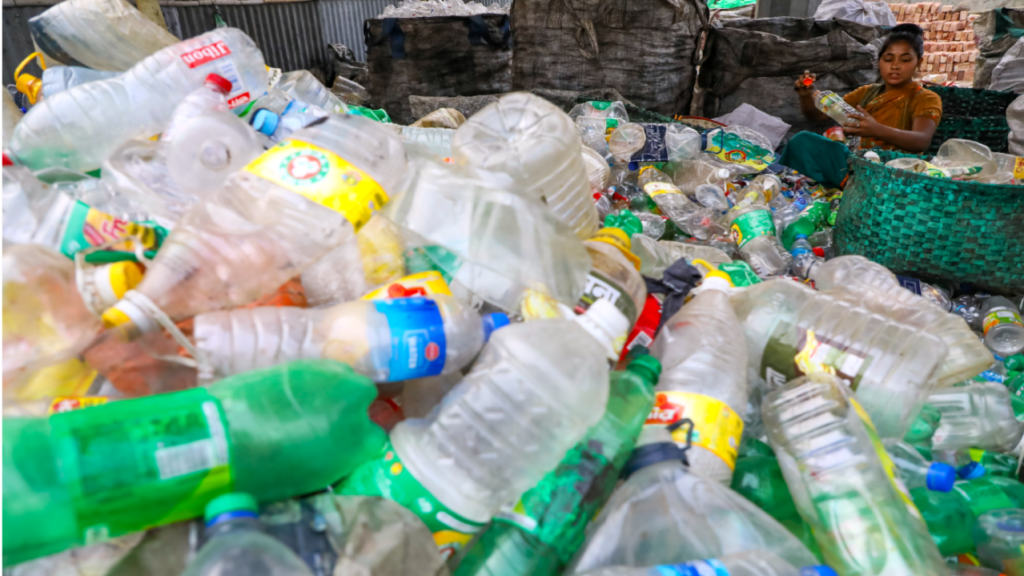Our planet is full of plastic. This ubiquitous human creation is found in the most remote places, from the North Pole to the South Pole and from the highest slopes of Mount Everest to the deepest point in the ocean, the Mariana Trench.
But plastic is also everywhere in our streets, public parks, rivers, streams, beaches and oceans, where it harms and kills wildlife. And, what may be surprising to many, plastic is even present everywhere in the human body.
That's why Earth Day 2024's theme, “Earth vs. Plastic,” is no exaggeration. This cheap, durable product, which can take centuries or more to decompose, comes amid a growing body of scientific evidence that plastic pollution is harmful to wildlife, natural ecosystems, and human health. Humanity is at a major crossroads in our relationship with materials.
Fortunately, there is a clear path to solving plastic pollution in the United States and around the world, although it is not easy.
The Pew Charitable Trusts details this in its 2020 report, “Breaking the Plastic Wave.”,Introducing changes at every stage of the plastic lifecycle, from production to use, recycling and disposal, could reduce global plastic pollution by 80% by 2040. But 80% solutions don't solve the problem. Achieving 100% by 2040 is the goal, but it will require further innovation and strong political will.
To be clear, this problem cannot be solved by recycling. Instead, solutions need to span the entire plastic lifecycle, with an initial focus on reducing plastic production and demand. In fact, the Pew report found that reducing plastic production and consumption would result in the greatest reduction in plastic pollution of any possible action. Reducing production and consumption also represents the greatest opportunity to reduce greenhouse gas emissions associated with plastic production and the conversion of virgin plastic, which accounts for almost 90% of plastic emissions.
To be effective, governments need to improve these practices with the support of businesses, non-governmental organizations, scientists, communities affected by plastic production and pollution, individuals who collect and recycle for a living, and consumers. You need to be solution-driven.
The U.S. government now has an unprecedented opportunity to play a central role in this global effort. The United Nations is negotiating an international agreement to end plastic pollution, with a goal of completing the agreement by the end of this year. During these negotiations, the United States should support global, legally binding obligations that address all stages of the plastic lifecycle.
Earth Day began in the United States in 1970. At the time, the United States was facing a new era of environmental degradation, with heavily polluted air, water, and land, and little testing of industrial waste. Since then, the U.S. government has led the way toward reducing pollution and cleaning up cities, towns, and natural areas through the Clean Air Act, the Clean Water Act, and other comprehensive federal laws. That work continues.
But the United States will build on its past actions and tackle plastic pollution by developing strong national policies at home and by supporting comprehensive and ambitious provisions as part of the United Nations' global agreement. There is a need.
U.S. leaders should view a strong domestic and international response to plastic pollution as a responsibility, not an option. The United States is the second largest producer of plastics in the world (after China) and one of the largest producers of plastic waste and the pollution it creates.
United Nations operations will resume next week when the Intergovernmental Negotiating Committee on Plastic Pollution meets in Ottawa to continue consultations. In doing so, the United States is committed to ensuring that the final agreement includes strong measures to reduce plastic production, ban problematic products and polymers such as multi-material plastic packaging, improve product design, and improve plastic management. Support should be provided to address the entire cycle. waste.
The agreement also includes ways to pay for the collection and management of post-consumer plastics, including extended producer responsibility, which requires companies that adopt plastic products to cover collection, sorting, recycling and waste management costs. need to focus. Strong measures are also needed to directly address and reduce plastic pollution, particularly from microplastics, particles less than 5 millimeters in size, which account for around a third of the world's plastic pollution.

A coherent and comprehensive international agreement is far more effective than individual governments pursuing these goals on their own. A state-led approach will almost certainly lead to fragmented policies and create uncertainty for the public and private sectors about how to provide the best solutions. This uncertainty, in turn, would undermine the effectiveness of the UN agreement.
Plastic pollution is an important issue that affects all aspects of our lives and has a major impact worldwide. Earth Day gives us an opportunity to focus on the collective action needed to solve this urgent problem. A comprehensive UN agreement with strong U.S. leadership is the first step toward overcoming plastic on the planet.
Winnie Lau leads Pew Charitable Trusts' effort to end plastic pollution.
Copyright 2024 Nexstar Media Inc. All rights reserved. This material may not be published, broadcast, rewritten, or redistributed.

